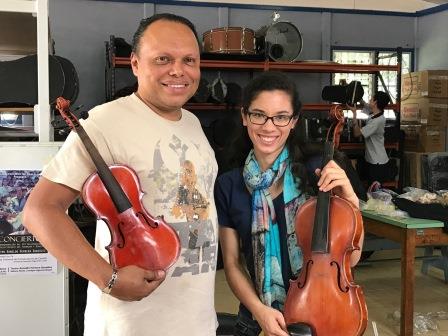Last month, I (Claire Allen) accompanied George Mason University School of Music’s International Teaching Scholars and their professors on a trip to Costa Rica. This was a multi-faceted trip, designed to allow participants to fully experience the country’s culture, study and perform alongside professional musicians, teach and conduct university students in Costa Rica, and to learn about music education at every stage – from after-school elementary programs in the rougher neighborhoods of San Jose to masterclasses at the collegiate level.
Potomac Arts Academy’s outreach program, Instruments in the Attic, was one of the sponsors of this trip. Fifty donated instruments, all with special notes inside from young Academy students, were sent through the Costa Rican embassy to be used in SINEM music education programs.
In addition to donating instruments from the Instruments in the Attic inventory, we were joined by Jason and Jenna Day of Day Violins for three days to visit Conservatorio Castella, an arts magnet school just outside San Jose, to repair string instruments. The Days arrived with three suitcases full of instrument parts, glue, and all types of tools. We made a brief visit to Conservatorio Castella on Monday to see how many instruments were in need of repair. We were led to the Bodega de Instrumentos, a large room where the school stored instruments for the use of the students.

Violins, violas, cellos, and a few upright basses were arrayed on the shelves. Some of the instruments were in cases; many were not. Very few of the instruments were in usable condition. We would later learn that most of the playable instruments were currently in possession of the students. Dust caked the instruments, which were in various states of disrepair. Most of them were missing some combination of strings, bridges, tuning pegs, soundposts, and tailpieces. In some extreme cases, the scrolls or necks of the instruments had totally broken away from the bodies.
The most damaged instruments were immediately handed over to Jason, who glued and clamped cracks, seams, and severed necks. These were left to dry overnight. In a building without air conditioning, in a humid climate, allowing enough time for the glue to dry was essential.
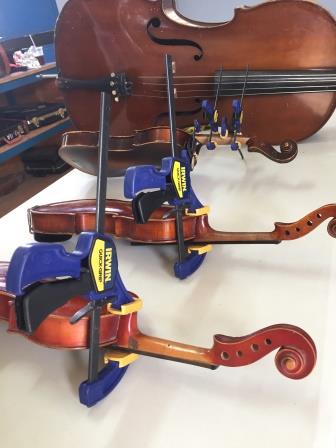
We also did our best to assess how many instruments were in need of repair and to create a plan of attack for the following day. Walking into the room and seeing all the broken instruments was overwhelming. Thinking of children who wanted to learn music but couldn’t because they didn’t have a usable instrument was gut-wrenching, and we fought back tears more than once as we took on the task before us.
On Tuesday morning, Jason, Jenna, and I arrived at 7:15 am to begin work. We laid out as many instruments as would fit on the counter and got to work. I had to overcome some of my natural aversion to attempting instrument repairs on my own – the goal was to make these instruments playable and so they would make a sound while holding together. I frequently asked Jason to check my work to make sure I wasn’t making any mistakes! We also had to overcome our scruples and take functioning parts from instruments we judged were beyond our ability to repair.
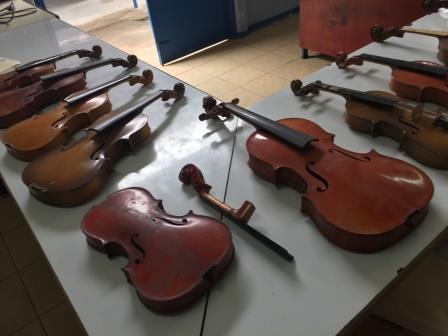
The first step was to clean off the layers of dirt and dust that covered the instruments. Jenna used wood pens to do cosmetic repairs on the many nicks and scratches that marred the varnish of each instrument. I fitted each instrument with new pegs, tailpieces, chin rests, and strings. The heaviest and most specialized repairs we left to Jason, the professional luthier. He cut new bridges, re-set (or made new) soundposts, and glued seams and cracks, among many other repairs!
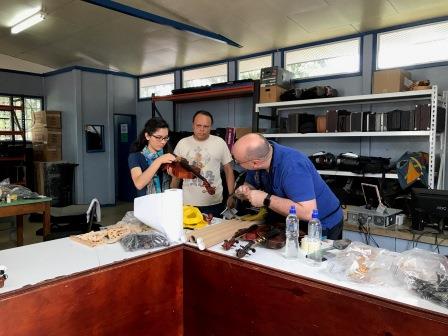
Helping us with the repairs were Carlos and Victor, two teachers at Conservatorio Castella who manage the instrument room. As wind and brass players, they hadn’t had much experience with string instruments, let alone repairs, but they were eager to learn. We learned that for various reasons, it is extremely difficult and prohibitively expensive to complete even the most basic string instrument repairs in Costa Rica. Once Jason realized they wanted to help and learn, he started teaching them how to fix instruments then and there. Thus began an exciting conversation that lasted the entire day and switched between Spanish and English. Jenna and Carlos were both fluent in Spanish and English and served as translators. My Spanish is fairly functional, as a result of studying it in school, but I’m by no means fluent. Victor’s English was slightly worse than my Spanish, and Jason only knew a few words and phrases in Spanish. Thanks to the varying levels of language proficiency among our group, we were able not only to work together but to learn about each other’s lives and musical experiences. In addition to discussing instrument repairs, we also traded fun musical stories about performances we had been a part of, teaching students who didn’t want to practice, and experiences at summer music festivals. Carlos and I had an unexpected conversation about Omaha, Nebraska, where he had attended marching band camp, and where my mother was born!
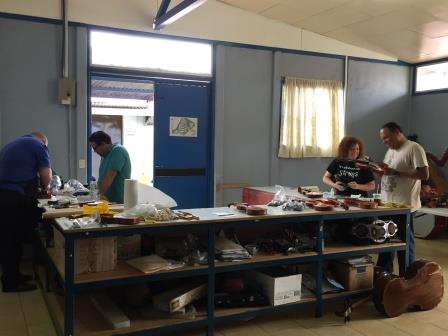
Some of my favorite Spanish words and phrases that I learned over my week in Costa Rica were learned that day in the Bodega de Instrumentos. Among them are “estrella de muerte,” or “Death Star.” When Victor walked into the room wearing a Star Wars t-shirt that morning, I greeted him with, “Victor! Somos amigos. Me encanta Star Wars!” Anyone who knows me knows just how much I love Star Wars and what a huge fan I am. It was an instant connection between us. I was so excited to talk about my favorite movies in Spanish – and it was affirming to know that my passion for Star Wars can make me friends even when I’m far away from home.
My other new favorite word is “alma,” which means “soul.” “Alma” is also the word used to refer to the soundpost, or the piece of dowel inside a string instrument that helps support the top of the violin as well as transferring vibrations between the front and back plates of the instrument. The placement of the soundpost is crucial for the tone of the instrument. Moving it even a few millimeters can completely change the sound. So, when I learned that the words for soundpost and soul in Spanish are one and the same, I realized that many of the instruments we were repairing were without soundposts – without souls. This broke my heart and I was relieved and grateful that Jason had brought extra dowels with him so he could give these instruments back their souls as we restored them to playing condition.
By early afternoon, word had spread on campus that we were there, fixing instruments. The rest of our group from Mason had also arrived and helped us clean instruments for an hour before they went to teach and play with the school’s band. The Bodega de los Instrumentos was suddenly full of people. We met just about every teacher on faculty (yes, Victor did introduce me as the girl who likes Star Wars), who came to thank us for the work and specify needed repairs on their students’ instruments. This kicked us into overdrive, since we weren’t yet finished with the instruments that were already in line to be fixed! Thanks to our team and the system we had worked out, we were able to complete all of the repairs, even with the extra instruments added in. When we left at 5 pm, we were exhausted but had fixed 32 violins and violas, 10 cellos, and 2 basses. Carlos and Victor had learned a lot about fixing string instruments – so much, in fact, that Jason left all of his tools, including the electric sander and drill, and most of the spare parts for them to use in the future.
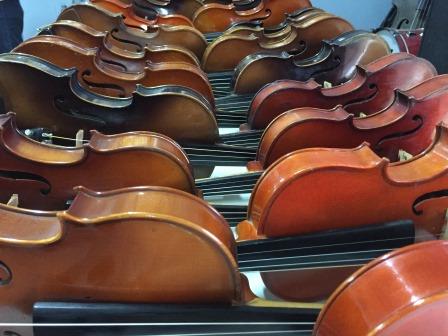
Helping to fix all those instruments was a monumental experience all in itself – but it’s the friendships forged among the five of us that day that made it one I will never forget. Both in my teaching and traveling, I’ve found that what matters the most to me in the world is creating authentic connection. True connection removes the divisions of “us” and “them,” especially when encountering people from different cultures than ourselves, and simply allows us to be human beings in relationship with each other. I have come to realize that many of the deepest connections created between souls (or “almas”) are ones that share a love of music and the arts. Whether it’s working toward a common goal like fixing an entire room full of broken instruments, sharing stories about our own experiences with music, or discovering a mutual love for Star Wars, it is the relationships built between people that truly make a difference in our world.
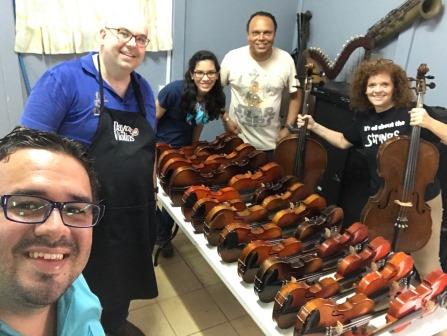
Learn more about our International Teaching Scholars program, Instruments in the Attic, and other OUTREACH PROGRAMS.

